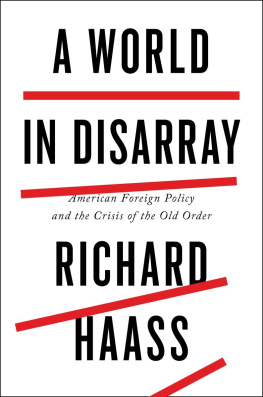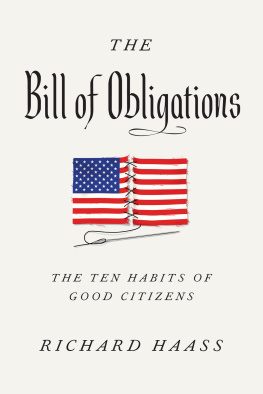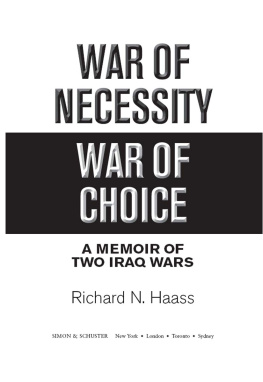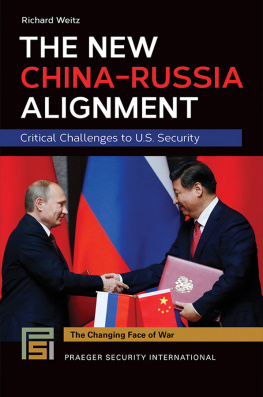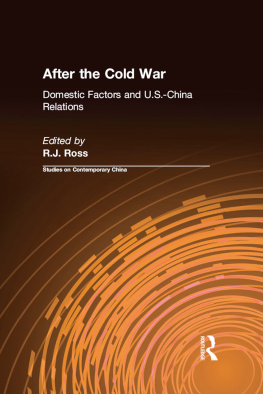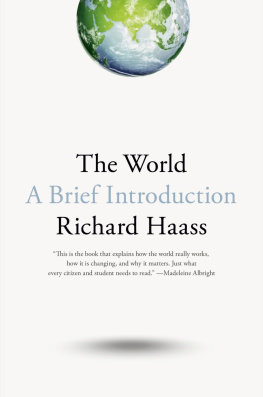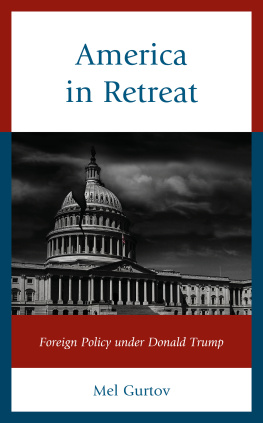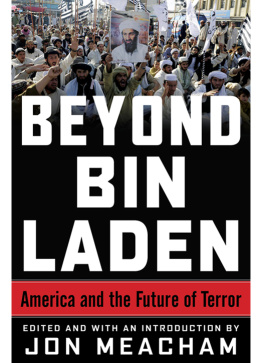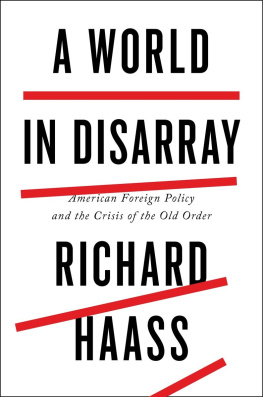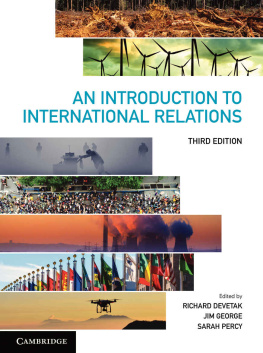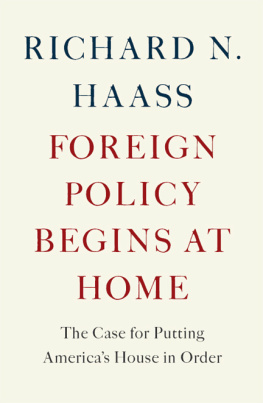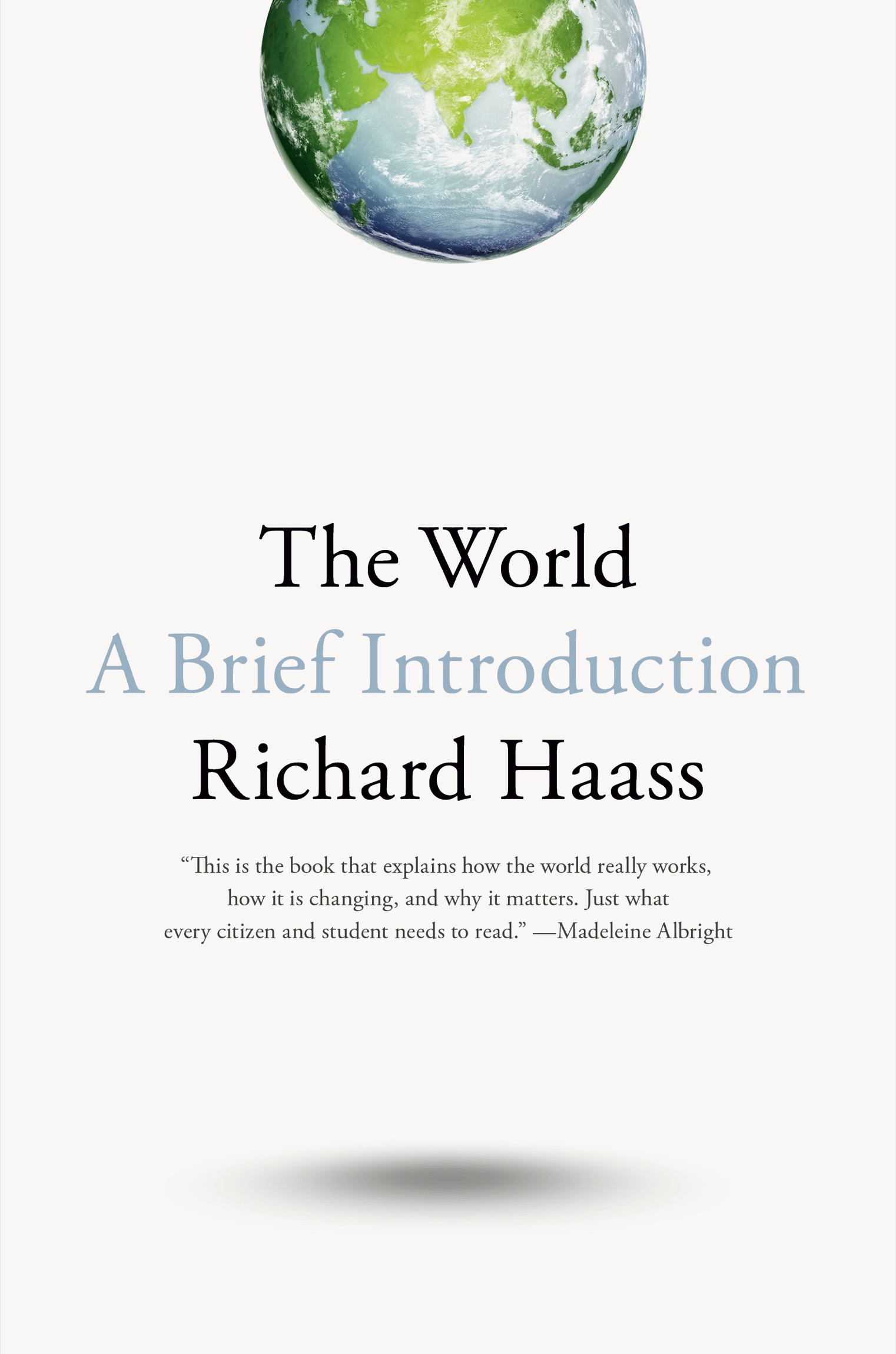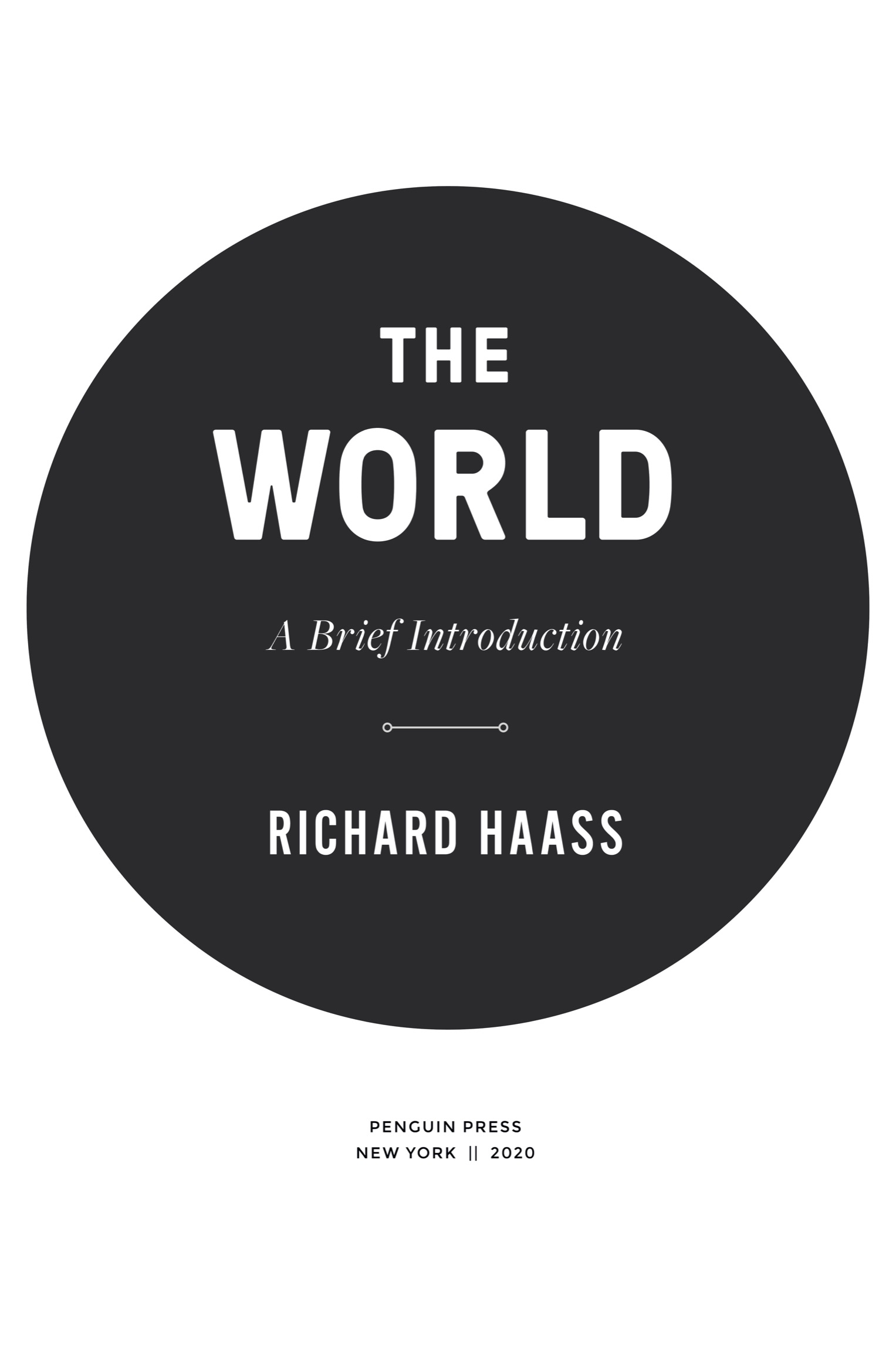ALSO BY RICHARD HAASS
A World in Disarray
Foreign Policy Begins at Home
War of Necessity, War of Choice
The Opportunity
The Bureaucratic Entrepreneur
The Reluctant Sheriff
Intervention
Conflicts Unending
Beyond the INF Treaty
Congressional Power
EDITED VOLUMES
Honey and Vinegar
Transatlantic Tensions
Economic Sanctions and American Diplomacy
Superpower Arms Control
PENGUIN PRESS
An imprint of Penguin Random House LLC
penguinrandomhouse.com
Copyright 2020 by Richard Haass
Penguin supports copyright. Copyright fuels creativity, encourages diverse voices, promotes free speech, and creates a vibrant culture. Thank you for buying an authorized edition of this book and for complying with copyright laws by not reproducing, scanning, or distributing any part of it in any form without permission. You are supporting writers and allowing Penguin to continue to publish books for every reader.
Illustrations by Michael Bricknell, Joyce Chen, Will Merrow, and Katherine Vidal Council on Foreign Relations
LIBRARY OF CONGRESS CATALOGING-I N-PUBLICATION DATA
Names: Haass, Richard, author.
Title: The world : a brief introduction / Richard Haass.
Description: New York : Penguin Press, 2020. | Includes bibliographical references and index.
Identifiers: LCCN 2019044618 (print) | LCCN 2019044619 (ebook) | ISBN 9780399562396 (hardcover) | ISBN 9780399562402 (ebook)
Subjects: LCSH: International relationsHistory. | World politics. | History, Modern.
Classification: LCC JZ1329.5 .H33 2020 (print) | LCC JZ1329.5 (ebook) | DDC 327.09dc23
LC record available at https://lccn.loc.gov/2019044618
LC ebook record available at https://lccn.loc.gov/2019044619
Cover design: Oliver Munday
Cover image: E+ / Getty Images
pid_prh_5.5.0_c0_r0
FOR SUSAN, SAM, AND FRANCESCA
CONTENTS
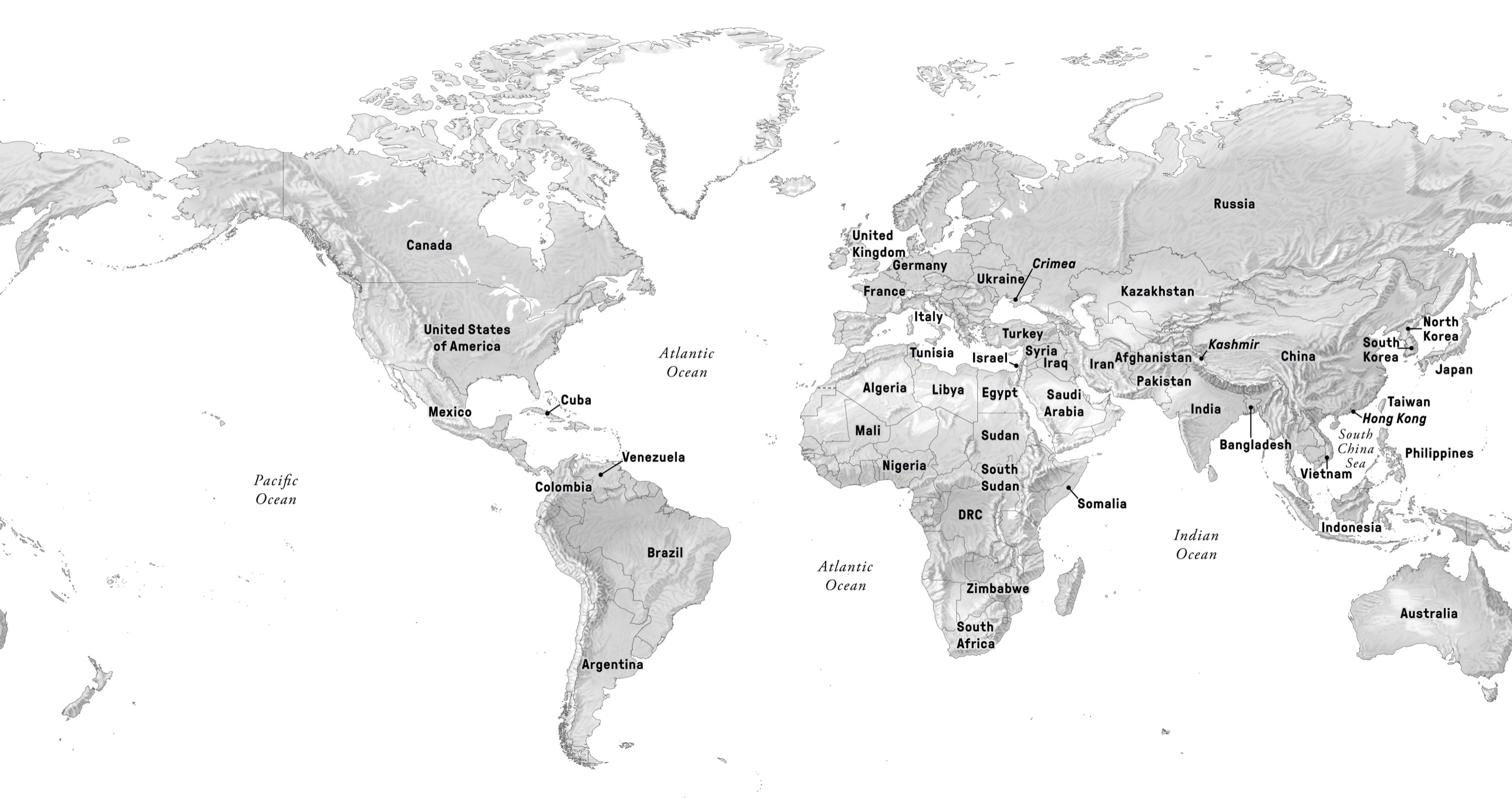
PREFACE
Every book comes with a story that helps to explain why the author committed the time and effort to produce it. In this case, the story starts on a summers day over a decade ago fishing with a friend in Nantucket. My friends nephew joined us on the boat, and I asked him where he went to school. Stanford, he told me. He was a computer science major, soon to begin his senior year. I went on to ask him a number of specific questions about what else he was studying beyond coding. Anything in economics? History? Politics? His answers revealed he had taken the minimum number of courses outside his major and those he did take had little to do with the basics. What was clear was that this intelligent young man would soon graduate from one of the best universities with little or no understanding of his own country or the world. And he would do so at a moment when the fate of his country and the world were inextricably linked and more was in flux than at any time since World War II and the years just after.
This troubled me. A search of graduation requirements at most American institutions of higher learning revealed it is possible to graduate from nearly any two- or four-year college or university in the United States, be it a community college or an Ivy League institution, without gaining even a rudimentary understanding of the world. A recent survey of over eleven hundred American colleges and universities found that only 17 percent require students to take courses in U.S. government or history, while only 3 percent require them to take coursework in economics. Dont get me wrong. Virtually every college or university offers multiple courses in international relations or American foreign policy, many of them well taught and comprehensive in what they cover. But unless a student chooses to major in these subjects, these courses are not required for graduationand in many cases not even then for those who do choose to major in a related area. One survey of the top American colleges and universities showed less than a third required history majors to take a single course in U.S. history or government! Core courses that all students must take are an endangered species. What most institutions require is that each student take one or more courses in various designated areas, such as the natural sciences, the social sciences, and the arts. In larger institutions, there may be as many as one hundred courses to choose from in each area. Thus, it can be possible to fulfill an American history requirement without learning about the American Revolution or the Civil War, or to satisfy a world history requirement without understanding World War II or the Cold War or, more fundamentally, why the world matters and how it operates. Studying a foreign language is valuable, but it is not a substitute.
In high schools, the situation is even more pronounced, in that many schools do not even offer basic courses in international relations or global issues. My purpose is not to explain how all this came to be, although I would say high schools have increasingly given short shrift to civics and social studies because of resource limitations and pressures to satisfy mandates related to science, technology, engineering, and mathematics, also known as STEM. Another explanation is the difficulty in reaching agreement as to what should be taught.
The reluctance of institutions of higher learning to assert what they believe a graduate should know and have under his or her belt is an unfortunate development. It would be far better if they would do so, and individuals could then choose to go to the school whose requirements best met their interests and objectives.
And then there is the fact that approximately one-third of Americans who graduate from high school do not attend any college and that only some 40 percent who do achieve a degree. All this, however, is a conversation for another day. What matters here and now is that an increasing number of young people in the United States and elsewhere are essentially uninformed about the world they are entering.
That said, this book is for men and women of all ages. Many of us who attended college did not focus on these issues, or even if we did study them, we forgot much of what we were taught. Whats more, what people of my generation learned decades ago is increasingly inadequate or even obsolete. A great deal of history has transpired in recent years. The Cold War, which was accepted as a permanent given when I grew up in the 1950s and 1960s and defined the world for the four decades after World War II, is over, as is the Soviet Union. China is a world power. New technologies and issues, from the internet and artificial intelligence to climate change, have emerged. The time has come to stop thinking of an education as something we receive in our youth, finish by the time we are in our early to mid-twenties, and live off for the next fifty years. We need to regularly top off our intellectual tank as we drive down the proverbial highway of life.
My aim in this book is to provide the basics of what you need to know about the world, to make you more globally literate. Global literacy as used here is not about the number of people around the world able to read. (In case you are interested, though, it turns out that some 85 percent of adults worldwide are able to read, a number that sounds better than it is because it still means 750 million men and women cannot.) Rather, global literacy for our purposes has everything to do with how much (or little) people know about and understand the world. Global literacy is essential, because we live in a time in which what goes on outside a country matters a great deal. Borders are not impermeable. The United States is bordered by two oceans, but oceans are not moats. For better and for worse, the so-called Vegas rulewhat happens there stays theredoes not apply in todays global world.


